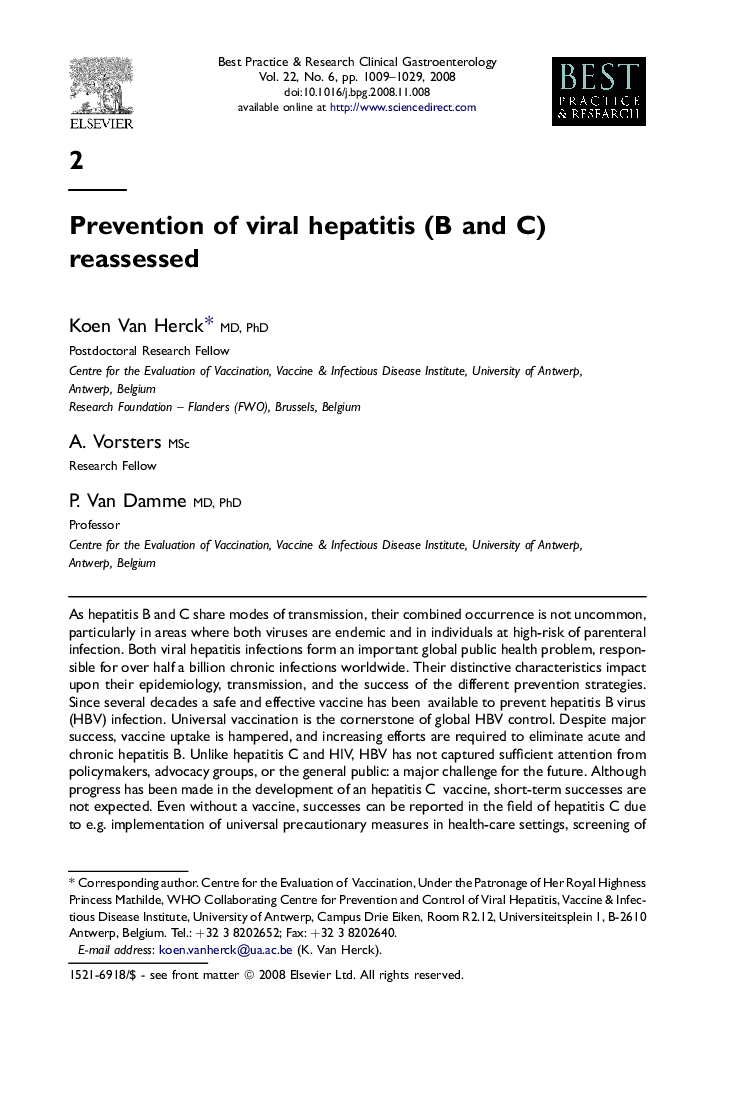| Article ID | Journal | Published Year | Pages | File Type |
|---|---|---|---|---|
| 3254628 | Best Practice & Research Clinical Gastroenterology | 2008 | 21 Pages |
As hepatitis B and C share modes of transmission, their combined occurrence is not uncommon, particularly in areas where both viruses are endemic and in individuals at high-risk of parenteral infection. Both viral hepatitis infections form an important global public health problem, responsible for over half a billion chronic infections worldwide. Their distinctive characteristics impact upon their epidemiology, transmission, and the success of the different prevention strategies. Since several decades a safe and effective vaccine has been available to prevent hepatitis B virus (HBV) infection. Universal vaccination is the cornerstone of global HBV control. Despite major success, vaccine uptake is hampered, and increasing efforts are required to eliminate acute and chronic hepatitis B. Unlike hepatitis C and HIV, HBV has not captured sufficient attention from policymakers, advocacy groups, or the general public: a major challenge for the future. Although progress has been made in the development of an hepatitis C vaccine, short-term successes are not expected. Even without a vaccine, successes can be reported in the field of hepatitis C due to e.g. implementation of universal precautionary measures in health-care settings, screening of blood and blood products, and identification and counselling of infected people. Despite important efforts, transmission in injecting drug users is increasing.
